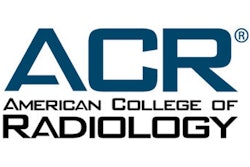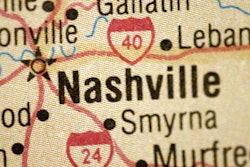
Radiology departments may think complying with the Joint Commission's 2015 accreditation standards for CT is an overwhelming undertaking, but it's not as hard as it seems, according to a presentation given at the recent International Society for Computed Tomography (ISCT) 2016 Symposium in San Francisco.
Sure, the accreditation requirements are made up of a long list of tasks organized under four main areas of practice. But many of these requirements are things your department may already be doing, as the Joint Commission looked to the American College of Radiology (ACR) for guidance when it crafted the new standards, said presenter Dr. Myron Pozniak of the University of Wisconsin-Madison.
So to succeed, keep one simple rule of thumb in mind, he told session attendees.
"Whatever you're doing to comply with these new standards, document it," he said.
More scrutiny for CT
It's been almost a year since the Joint Commission (formerly known as JCAHO) published new accreditation standards that outlined a higher level of scrutiny for CT practices. The new standards are in addition to Medicare requirements mandated by the Protecting Access to Medicare Act of 2014, and cover all CT, PET/CT, and SPECT/CT exams (except for interventional studies or those acquired in an inpatient setting).
The standards address four areas of practice: environment of care, human resources, provision of care, and performance improvement, Pozniak said. He outlined each area and suggested ways radiology practices or departments can make sure they're ready for a Joint Commission visit:
- Environment of care. This includes documentation of a quarterly occupational dose review by the radiation safety officer, how the department maintains quality of diagnostic images, annual measurement and verification of CT dose index volume (CTDIvol), annual equipment quality check and testing of image acquisition display monitors, shielding design assessment before equipment is installed, and shielding surveys after equipment is installed.
- Human resources. Facilities should have proof that physicists are qualified and proof of annual technologist training. "Physicists now have to be accredited," Pozniak said. "And not only do your techs have to get annual training credits, they have to be trained on the equipment you're currently using."
- Provision of care. This includes documentation of radiation dose index for every study in a retrievable format, verification of prescan patient information and exam protocol, proof of considering a patient's age when deciding on exam type, adoption of protocols based on current standards of care, and proof of periodic review of protocols. "Many of us are doing this prescan verification of patient information already, for insurance purposes. But now the Joint Commission requires this for every patient," Pozniak said.
- Performance improvement. Facilities need to identify incidents where radiation dose exceeded expectations, review and analyze these incidents, and compare them with external benchmarks. Although there aren't many external benchmark databases available, Pozniak suggested that session attendees could check out those developed by the University of Wisconsin-Madison and posted on its website.
How to prepare?
The Joint Commission's CT examination process is still evolving, Pozniak said. There are currently only three radiologists in the organization's pool of examiners -- and one of these is an interventionalist. In fact, the majority of examiners are nurses.
"Examiners are currently receiving training in imaging standards, but at the moment, they're not looking at fine detail," he said.
Pozniak conducted his own informal survey with colleagues about Joint Commission visits to determine what kind of questions the organization is asking, he told session attendees. Typical questions included the following:
- Do you turn off viewing stations before leaving them?
- Where are the fire extinguishers?
- Are pre- and postprocedure notes filled out and signed by the appropriate physician?
- Are sedation sheets filled out and signed by appropriate physicians and/or nurses?
- How is radiation dose monitored, saved, and reported?
- Show us your protocols for IV contrast administration.
- Who did your last protocol review, and when? Can you show us documentation of this?
"They want to see that a radiologist, a physicist, and a technologist have been reviewing protocols," Pozniak said.
Document, document, document
To be ready for a visit from the Joint Commission, a radiology department should make sure staff credentialing and training are documented and that this paperwork is accessible, Pozniak said. In addition, subscribe to the Joint Commission's Perspectives newsletter, where you can find any revisions to accreditation standards.
But no matter what, create a paper trail of everything the department is doing to comply, Pozniak concluded.
"These new standards can be daunting," he said. "Just make sure you have your policies in place, and document, document, document."
Study disclosures
The University of Wisconsin-Madison supplies CT protocols to a vendor under a licensing and distributor agreement, and Pozniak is the lead investigator of the effort. He is also a consultant for GE Healthcare.





















